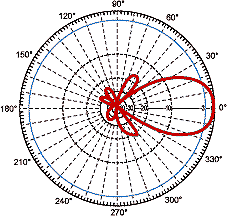
You can think of the radiation pattern as a balloon -- if you push in on one side, it bulges somewhere else.
We can consider an isotropic antenna as a reference point. An isotropic antenna would radiate waves equally in all directions. It would create a spherical radiation pattern with the antenna at the center. The signal would be strongest close to the antenna, and fall off at the same rate in every direction.
If you design an antenna that flattens the isotropic pattern, the waves would not propogate up and down so well, but they would be pushed further out in the horizontal plane, creating an omni-directional antenna.
(Think of a ballon in a sandwich between two flat boards. If you push the boards together, the ballon would expand to the sides).
If, for example, you wish to network your house, you might place an omni-directional antenna in one of the middle rooms. As its name implies, it would radiate power in all directions. This would work best in a one story house since it radiates better in the horizontal than vertical plane.
Directional antennae focus the power in both the horizontal and vertical planes. (Think of deforming your round baloon into a long skinny one). A directional antenna would be used for a point-to-point link. It would have two advantages over an omni-directional antenna. The transmitter and receiver could be further apart since power is concentrated and interference with nearby radios would be reduced.

As this directional antenna radiation pattern shows, nearly all the radiation is confined to a 60 degree slice. One could even construct an antenna array in which several antennae were mounted at the same point, each radiating in a different direction.